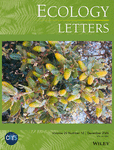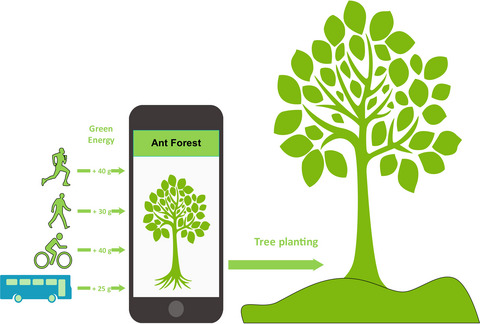Journal list menu
Export Citations
Download PDFs
Cover Image
Cover Image
- Page: i
- First Published: 11 November 2020
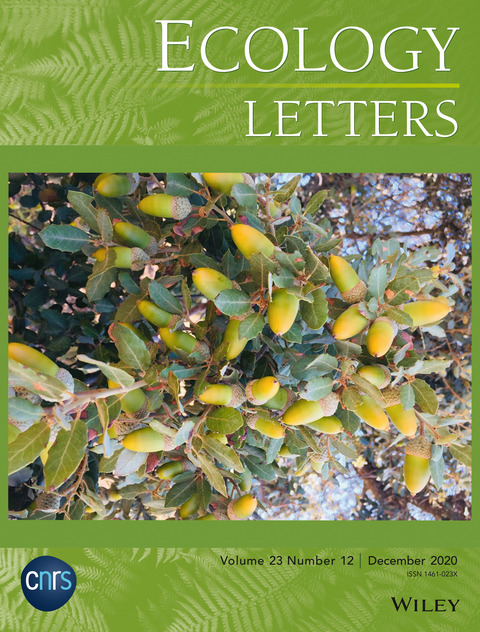
The cover image is based on the Letter Flowering synchrony drives reproductive success in a wind-pollinated tree by Michał Bogdziewicz et al., https://doi.org/10.1111/ele.13609.
Cover Image
- Page: ii
- First Published: 16 November 2020
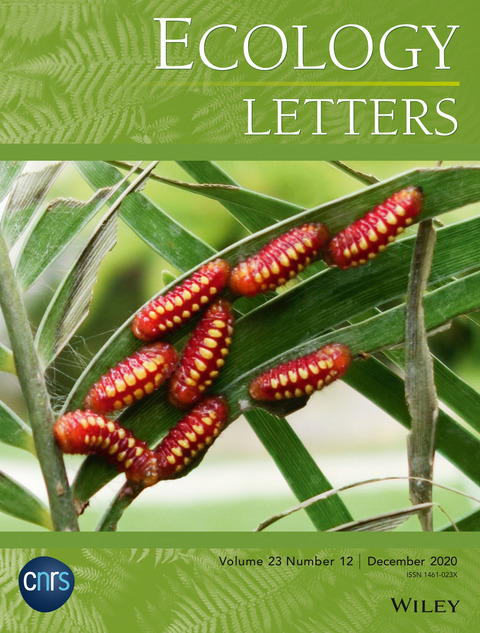
The cover image is based on the Review and Synthesis Ecology and evolution of cycad-feeding Lepidoptera by Melissa R. L. Whitaker and Shayla Salzman https://doi.org/10.1111/ele.13581.
Photo Credit: Shayla Salzman
Cover Image
- Page: iii
- First Published: 16 November 2020
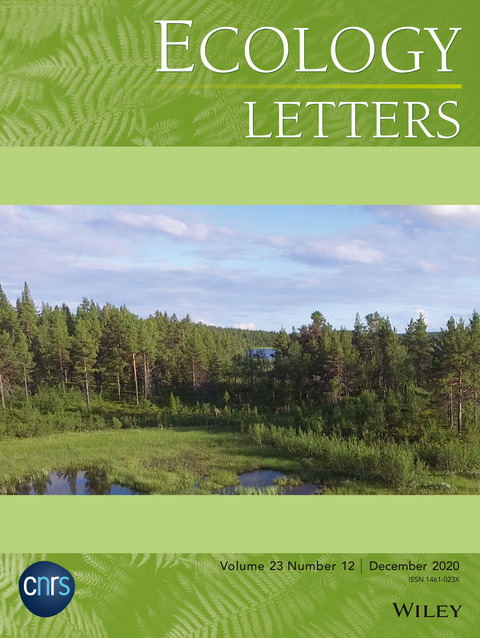
The cover image is based on the Letter A fingerprint of climate change across pine forests of Sweden by Jacek Oleksyn, Tomasz P. Wyka, et al., https://doi.org/10.1111/ele.13587.
Photo Credit: Jacek Kamczyc
Cover Image
- Page: iv
- First Published: 16 November 2020
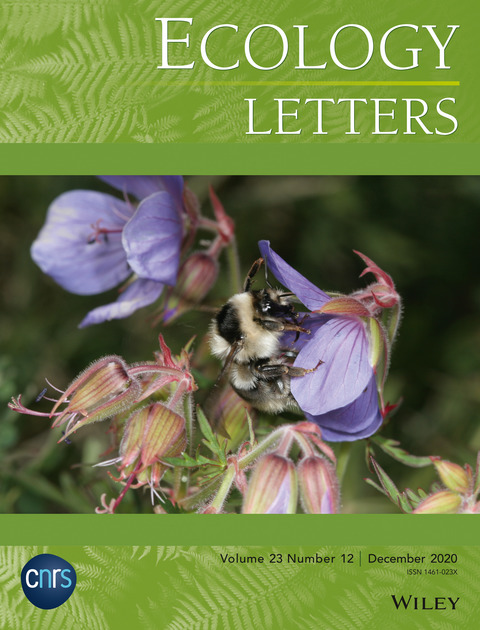
The cover image is based on the Letter Evolutionary stability of plant–pollinator networks: efficient communities and a pollination dilemma by Soeren Metelmann et al., https://doi.org/10.1111/ele.13588.
Photo Credit: Shoko Sakai
Issue Information
Viewpoints
Advancing nature-based approaches to address the biodiversity and climate emergency
- Pages: 1729-1732
- First Published: 22 September 2020
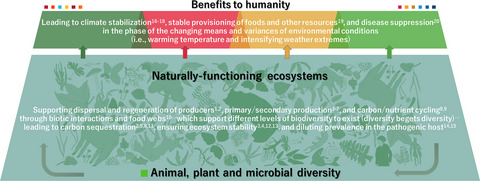
Naturally-functioning ecosystems, supported by biodiversity, are crucial to face many socio-environmental issues including climate change. However, biodiversity loss and climate change do not receive equal attention to date. Putting biodiversity at the heart of nature-based approaches is crucial to make collective efforts for the environment truly effective.
What is wrong between ecological science and policy?
- Pages: 1736-1738
- First Published: 28 September 2020
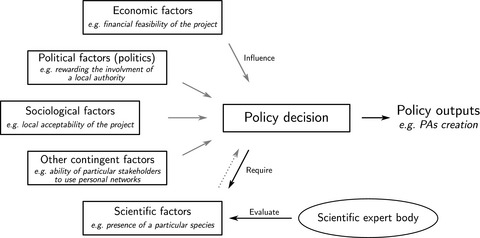
Ecological research is highlighting different kinds of issues concerning biodiversity conservation policies. Based on a historical study on protected areas, we suggest that these issues are not caused by a lack of knowledge or technical tools but rather by a misuse of ecological knowledge during the implementation of policy instruments in part driven by a lack of understanding of the mechanisms underlying the policymaking process.
Letters
A fingerprint of climate change across pine forests of Sweden
- Pages: 1739-1746
- First Published: 28 August 2020
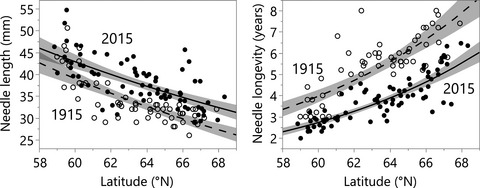
Direct evidence of the influence of climate change on trees and forests remains scarce. By using contemporary and historical data for Scots pine, we show that from 1915 to 2015 needle longevity has been reduced and needle length has increased everywhere along a temperate–boreal transect, as predicted by fundamental relations of tree traits to the thermal environment.
Evolutionary stability of plant–pollinator networks: efficient communities and a pollination dilemma
- Pages: 1747-1755
- First Published: 20 August 2020
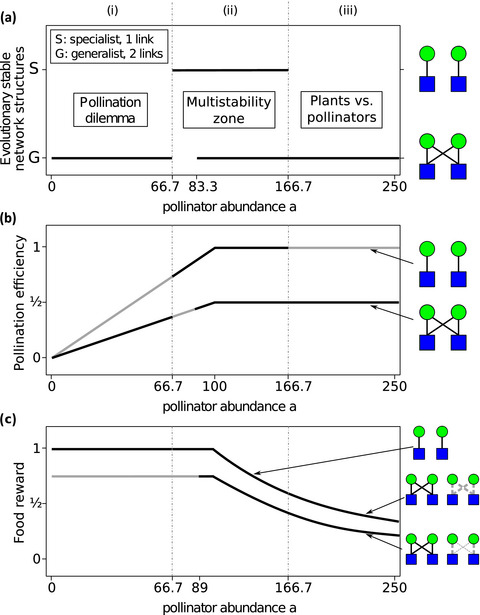
In plant-pollinator interactions, often dozens or even hundreds of species with different degrees of specialization form complex networks. Here, we present a new game theoretical approach to understand the coevolutionary processes in these networks. The results suggest that availability of pollination services is a key factor structuring pollination networks and may offer a new explanation for geographical differences in pollination communities.
Grassland ecosystem recovery after soil disturbance depends on nutrient supply rate
- Pages: 1756-1765
- First Published: 17 September 2020
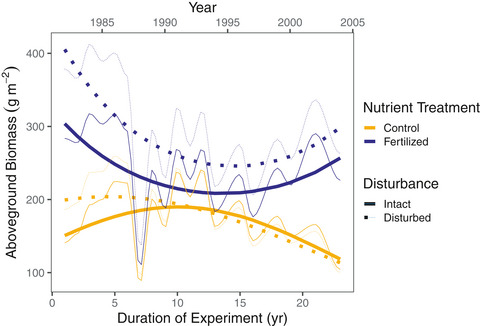
Ecosystem recovery following disturbance may be altered by environmental conditions. We tracked the recovery of a grassland for two decades following an intensive agricultural disturbance under ambient and elevated nutrient conditions. Nutrient enrichment changed the recovery rate following disturbance, and some disturbance effects remained hidden for many years.
Phenological asynchrony: a ticking time-bomb for seemingly stable populations?
- Pages: 1766-1775
- First Published: 25 September 2020
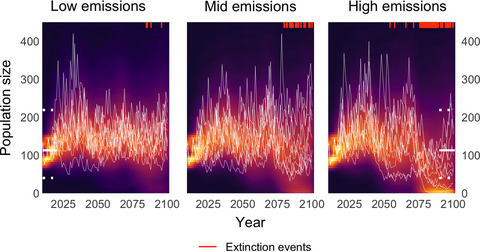
We use a structured population model to project great tit phenology and population size to the end of this century under three climate change scenarios. We also project the phenology of their primary spring prey species, the winter moth caterpillar. Our projections suggest that current population stability, resulting from buffering, could be masking a route to population collapse, if high greenhouse gas emissions continue.
Hot droughts compromise interannual survival across all group sizes in a cooperatively breeding bird
- Pages: 1776-1788
- First Published: 17 September 2020
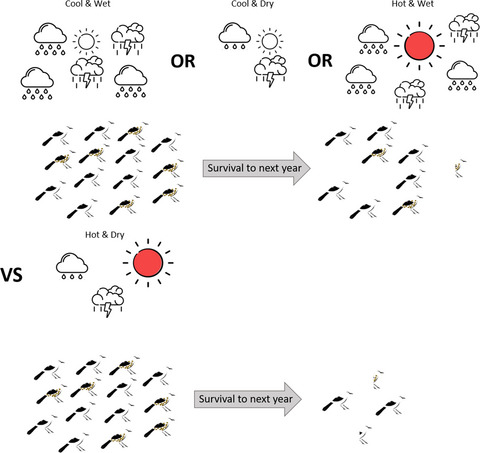
We used a 15-year dataset for a cooperatively-breeding bird, the southern pied babbler Turdoides bicolor, to explore the impacts of temperature, rainfall, and group size on a desert-adapted bird. We show that hot droughts, which are expected to increase in frequency in future, are associated with an 86% reduction in interannual survival of juveniles and a 60% reduction in interannual survival of breeding adults. Individuals across all group sizes experienced similar effects of climatic conditions, suggesting that larger group sizes may not buffer against the impacts of climate variability and change as has been theorised.
Genetic correlations and ecological networks shape coevolving mutualisms
- Pages: 1789-1799
- First Published: 24 September 2020
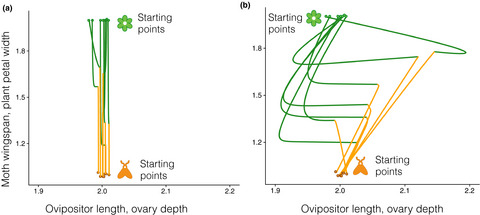
Genetic correlations between traits can alter the response to natural selection from generation to generation affecting adaptation in constant, abiotic environments. The effect of correlations, however, may diminish over time, reducing their long-term impact on trait evolution. Much of the ongoing selection on populations, however, is driven by interactions among species. We evaluated how genetic correlations affect evolutionary change when species coevolve either as pairs of species or as networks of dozens of species. We found that correlation among traits affects the pace, trajectories, and outcomes of coevolving species, ultimately promoting the diversification of traits across populations. The effects of genetic correlations, however, are modulated by the structure of ecological networks.
Shifting limitation of primary production: experimental support for a new model in lake ecosystems
- Pages: 1800-1808
- First Published: 18 September 2020
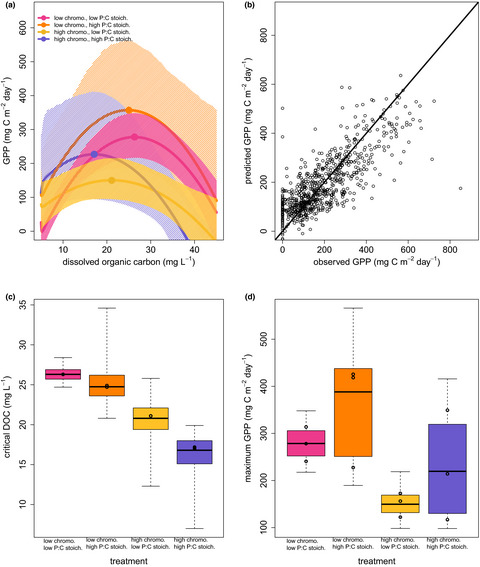
Here, we present the first experimental test of a new model describing how shifts from nutrient to light limitation control primary productivity in lake ecosystems as hydrological inputs of nutrients and organic matter vary. We found strong support for two key predictions of the model: that gross primary production (GPP) follows a hump-shaped relationship with increasing dissolved organic carbon (DOC) concentrations; and that the maximum GPP, and the critical DOC concentration at which the hump occurs, are determined by the stoichiometry and chromophoricity of the hydrological inputs.
Resource supply governs the apparent temperature dependence of animal production in stream ecosystems
- Pages: 1809-1819
- First Published: 01 October 2020
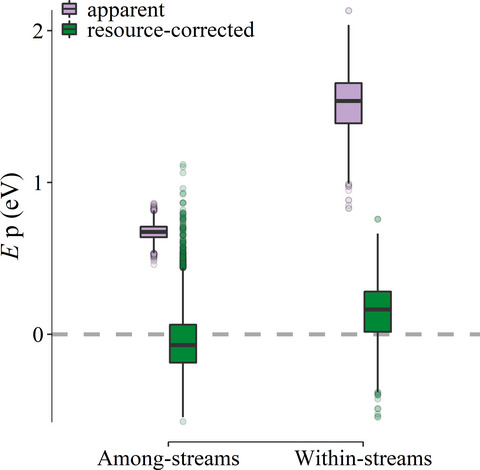
We tested a central prediction of the metabolic scaling framework—the temperature independence of animal community production—using a series of geothermally heated streams and a comprehensive empirical analysis. After accounting for spatial and temporal variation in resources, we show that the apparent positive effect of temperature was driven by resource supply, providing strong empirical support for the temperature independence of invertebrate production and the necessary inclusion of resources in metabolic scaling efforts.
Flowering synchrony drives reproductive success in a wind-pollinated tree
- Pages: 1820-1826
- First Published: 27 September 2020
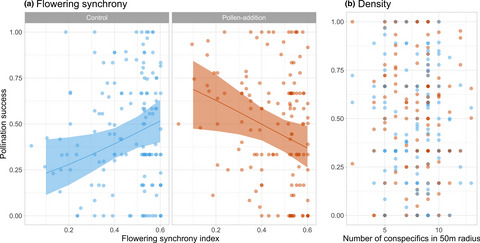
Our study demonstrates the causal link between flowering synchrony and seed set in trees. This research provides the first experimental support that pollen limitation due to asynchronous flowering reduces seed set - a key assumption of the phenological synchrony hypothesis. This hypothesis integrates environmental conditions and pollen dynamics, and therefore brings together the two major factors thought to influence interannual synchrony of inter-annual variation in seed production.
Ecological and conceptual consequences of Arctic pollution
- Pages: 1827-1837
- First Published: 25 September 2020
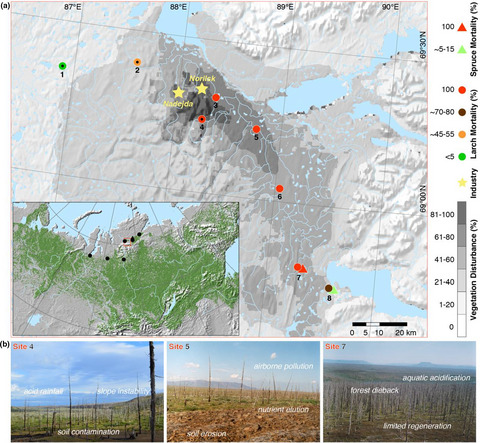
In this study, we present the combined evidence from dendroecology, biogeochemistry and process-based forward modelling to address the direct and indirect effects of industrial pollution on the functioning and productivity of boreal forest ecosystems. In addition to the quantification of the exceptional rate of environmental devastation around Norilsk, the world’s most polluted Arctic region, we demonstrate that anthropogenic-induced ‘Arctic Dimming’ can explain the yet unresolved ‘Divergence Problem’ in tree-ring research.
Coexistence barriers confine the poleward range of a globally distributed plant
- Pages: 1838-1848
- First Published: 06 October 2020
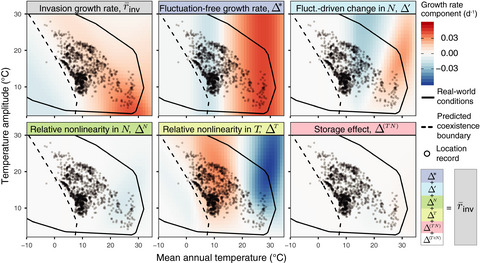
Species' poleward ranges are commonly thought to be limited by climatic constraints rather than by competition. We test this prediction by challenging a mechanistic niche model that includes interspecific competition terms to predict the range limits of two globally-distributed plant species. Our results suggest that competition between the species at high latitudes leads to a coexistence boundary that limits the inferior competitor's further poleward expansion.
Methods
A Bayesian network approach to trophic metacommunities shows that habitat loss accelerates top species extinctions
- Pages: 1849-1861
- First Published: 27 September 2020

We develop a novel approach to trophic metacommunities which allows us to explore how progressive habitat loss affects food webs. Our method combines classic metapopulation models on fragmented landscapes with a Bayesian network representation of trophic interactions for calculating local extinction rates. Combining straightforward parameterisability with computational efficiency, our method permits the analysis of species-rich food webs over large landscapes, with hundreds or even thousands of species and habitat patches, while still retaining much of the flexibility of explicit dynamical models.
Reviews and Syntheses
Ecology and evolution of cycad-feeding Lepidoptera
- Pages: 1862-1877
- First Published: 24 September 2020
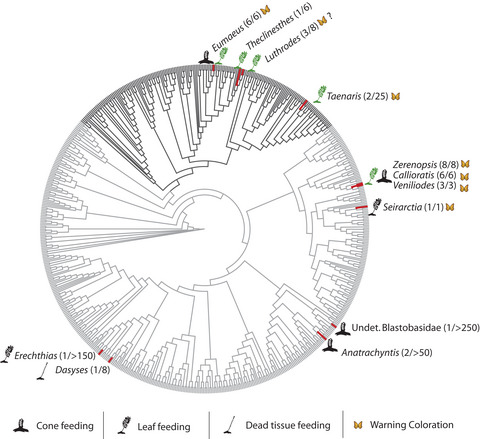
Cycad-feeding has evolved multiple times among Lepidoptera (moths and butterflies), though only a few clades seem to have radiated following their transitions from angiosperm hosts to cycads. Cycadivorous Lepidoptera exhibit diverse feeding ecologies, defensive traits, and varying degrees of specialization, and therefore provide numerous opportunities for comparative studies of chemically-mediated eco-evolutionary dynamics. This comprehensive review review evaluates cycadivorous species' diets and life histories, discusses key ecological and evolutionary implications of cycad feeding, and highlights promising areas for future study.
Uncovering ecological state dynamics with hidden Markov models
- Pages: 1878-1903
- First Published: 19 October 2020
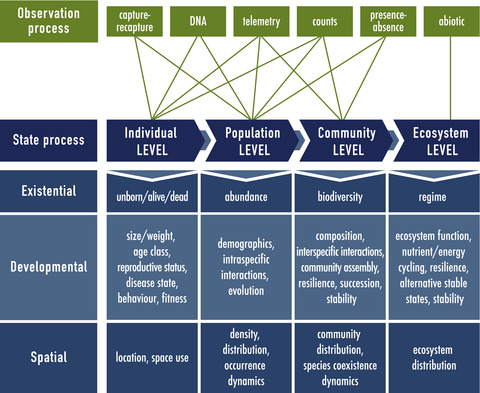
By formally disentangling state and observation processes based on simple yet powerful mathematical properties that can be used to describe many ecological phenomena, hidden Markov models (HMMs) can facilitate inferences about complex system state dynamics that might otherwise be intractable. We provide a gentle introduction to HMMs, establish some common terminology, review the immense scope of HMMs for applied ecological research, and provide a tutorial on some of the more technical aspects of HMM implementation and interpretation. By illustrating how practitioners can use a simple conceptual template to customise HMMs for their specific systems of interest, revealing methodological links between existing applications, and highlighting some practical considerations and limitations of these approaches, our goal is to help establish HMMs as a fundamental inferential tool for ecologists.
Corrigendum
Corrigendum for Muhl et al. (2018)DOI: 10.1111/ele.13109
- Page: 1904
- First Published: 11 November 2020




